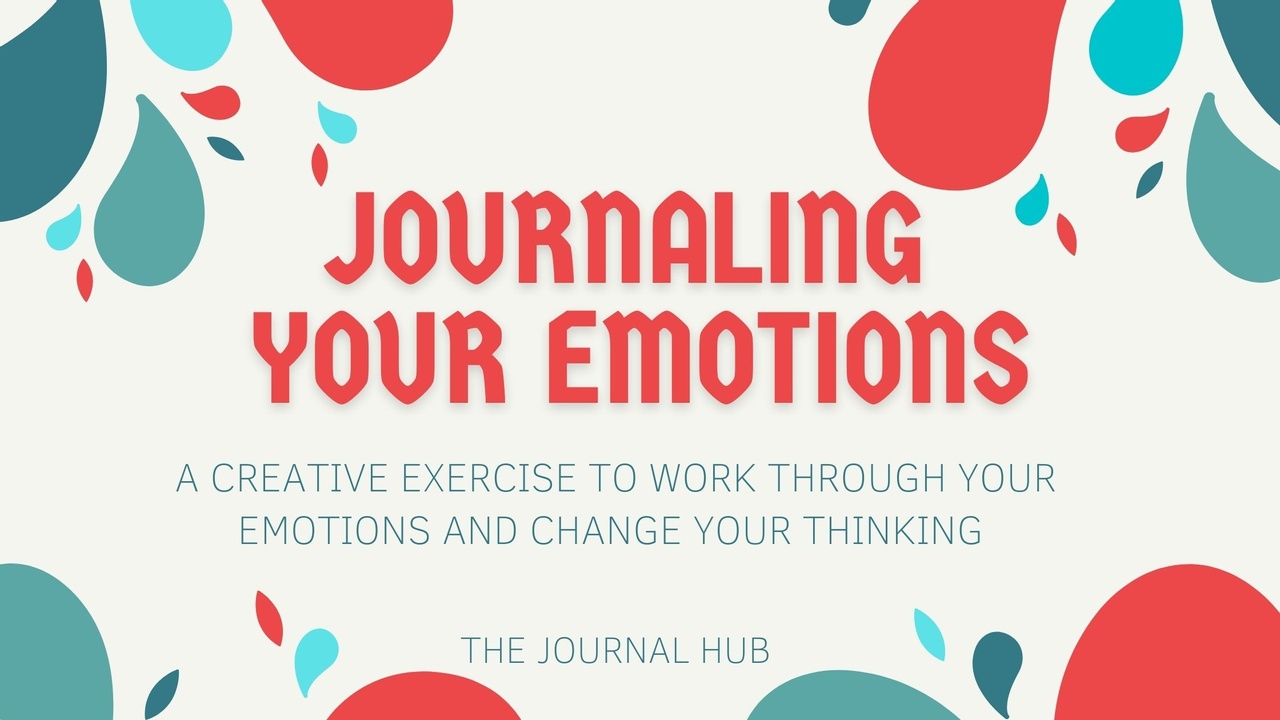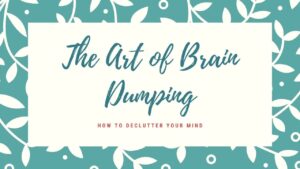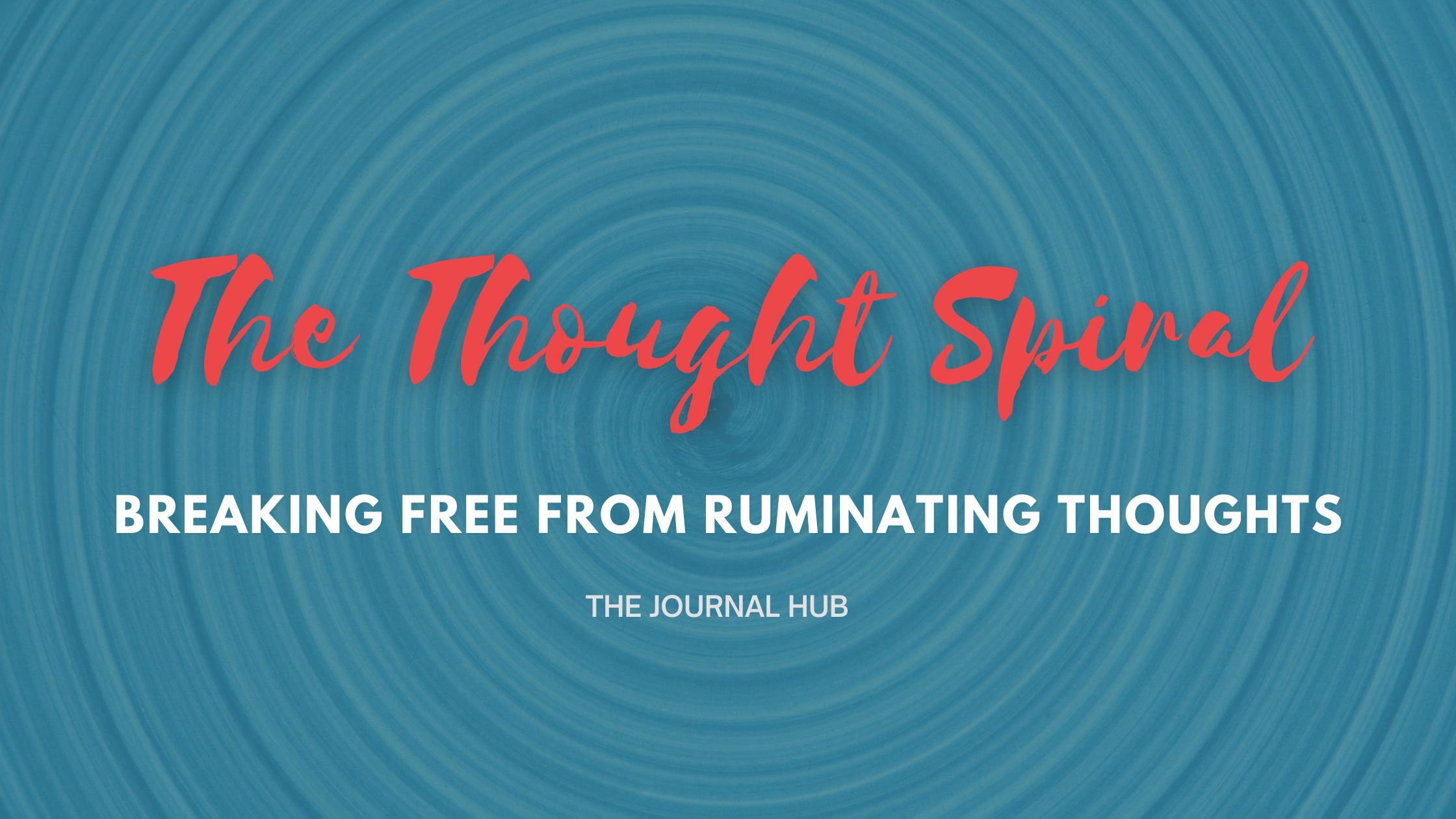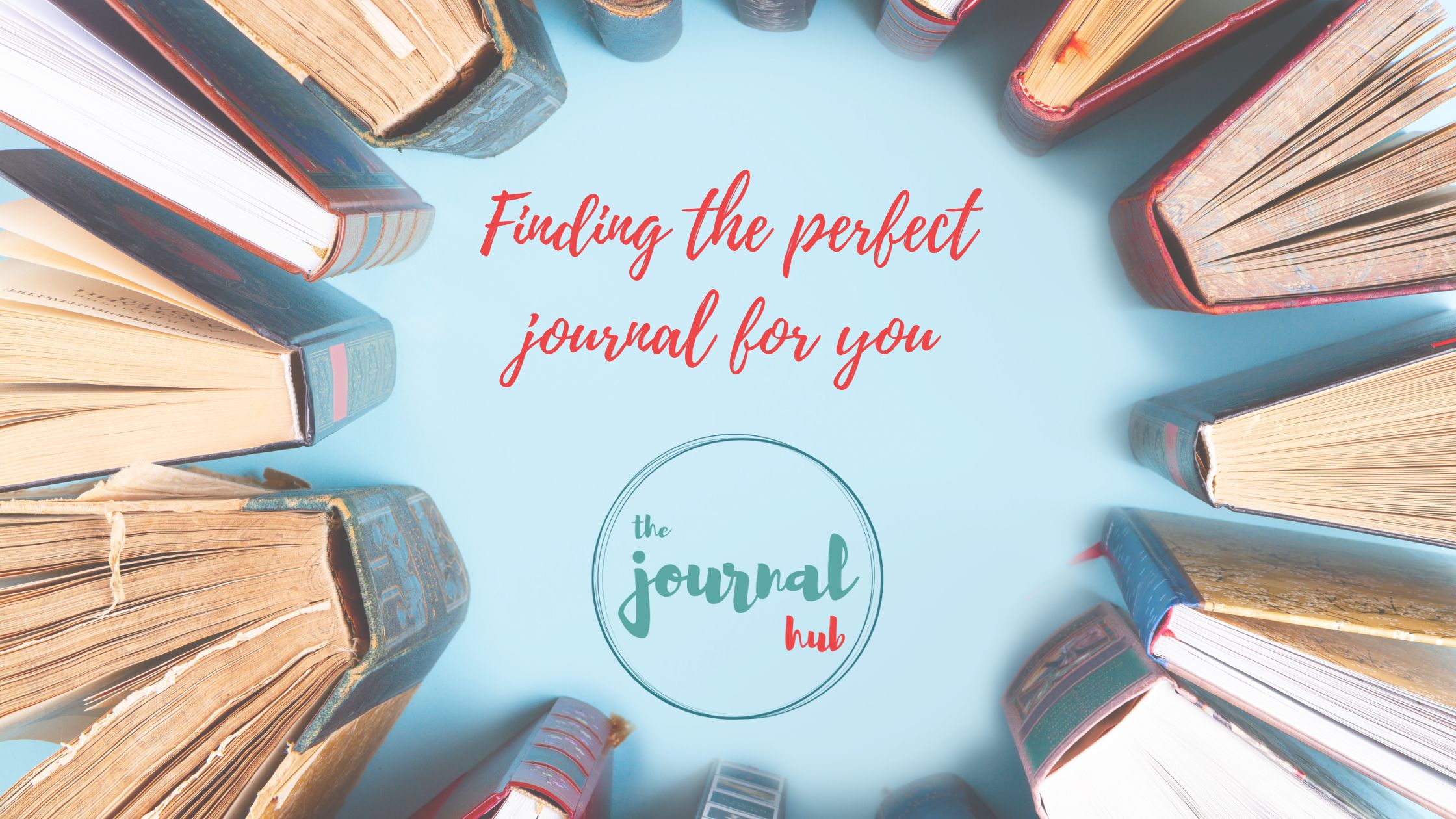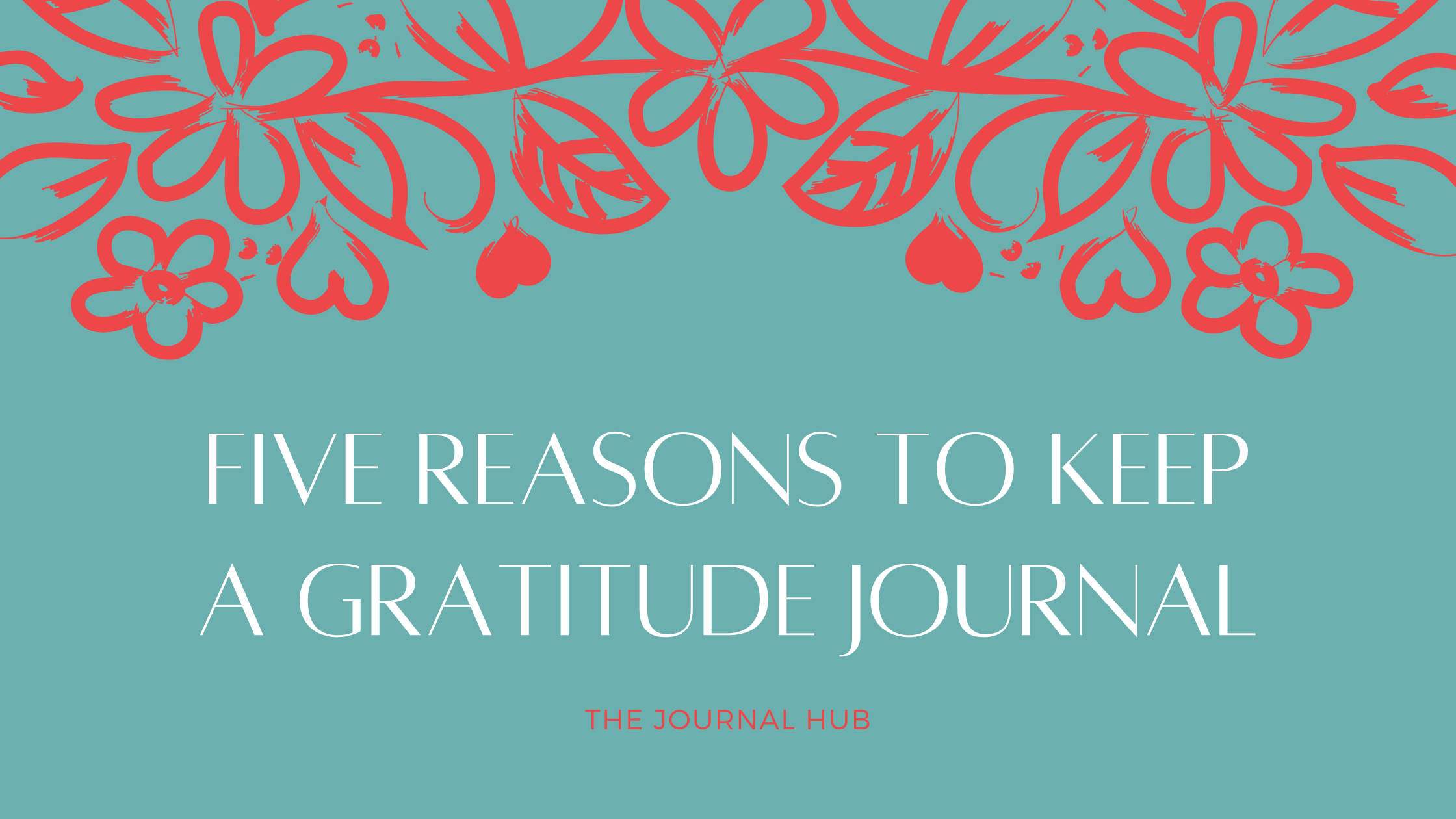After showing you all my vision journal in my Facebook Live – Many Journals. I have had a few questions about my Overwhelm Page.
This is part of my process of working through my emotions. It allows me to be creative and work out some of my overwhelm on the paper. As you can see you do not need to be a brilliant artist to be creative. This was done with coloured pencils and pens in my vision journal.
I have a bit going on at the moment – moving into our new home that took five years to build, co-ordinating all the extra bits that need to be done, working full-time, blogging on The Journal Hub and studying for my Masters Certificate in Life Coaching. Throw in a burst pipe and flooded lounge room (rental property), add in some family drama and you have a recipe for overwhelm.

Well actually, I have taken most of it in my stride and it is mainly due to the work I did on this page a few months back when I was feeling very overwhelmed. This is why it is so important to do the work. It is also why I like to do this work in my journal, so I can always refer back to it.
So how do you work through your emotions using this technique?
Name the emotion
It is important to name your emotions – to be able to identify them and reflect on the intensity of the feeling. Sometimes it is not as easy as you think.
The wheel below can help you. The Emotion Wheel was originally developed by Robert Plutchik, a psychologist and Professor of psychiatry at Albert Einstein College of Medicine. It has since been added to and developed to show the different intensities of emotion.
Being able to articulate and identify your emotions leads to greater self-awareness. Being able to identify your emotions gives you are greater sense of control and allows you to put a plan in place to assist you to cope and move through it and then forward.
If you are struggling to name your emotion, look at the wheel for inspiration.
Manage your thoughts
If you can control your thoughts you can control your destiny. Examining and managing your thoughts can help you control your feelings, which will determine your actions, that will lead to the results in your life.
Before you can manage your thoughts you need to know what they are. We have thousands of thoughts per day. Have you ever taken the time to step back and take note of what you are thinking?
Take 10 minutes a day and write down your thoughts. This can be a challenging exercise initially so bear with it. Try doing it for a week. Set a timer and just write whatever comes into your mind.
At the end of the week, look back at your thoughts. Were they positive? How did they make your feel? What actions did you take because of having those thoughts? What was the result?
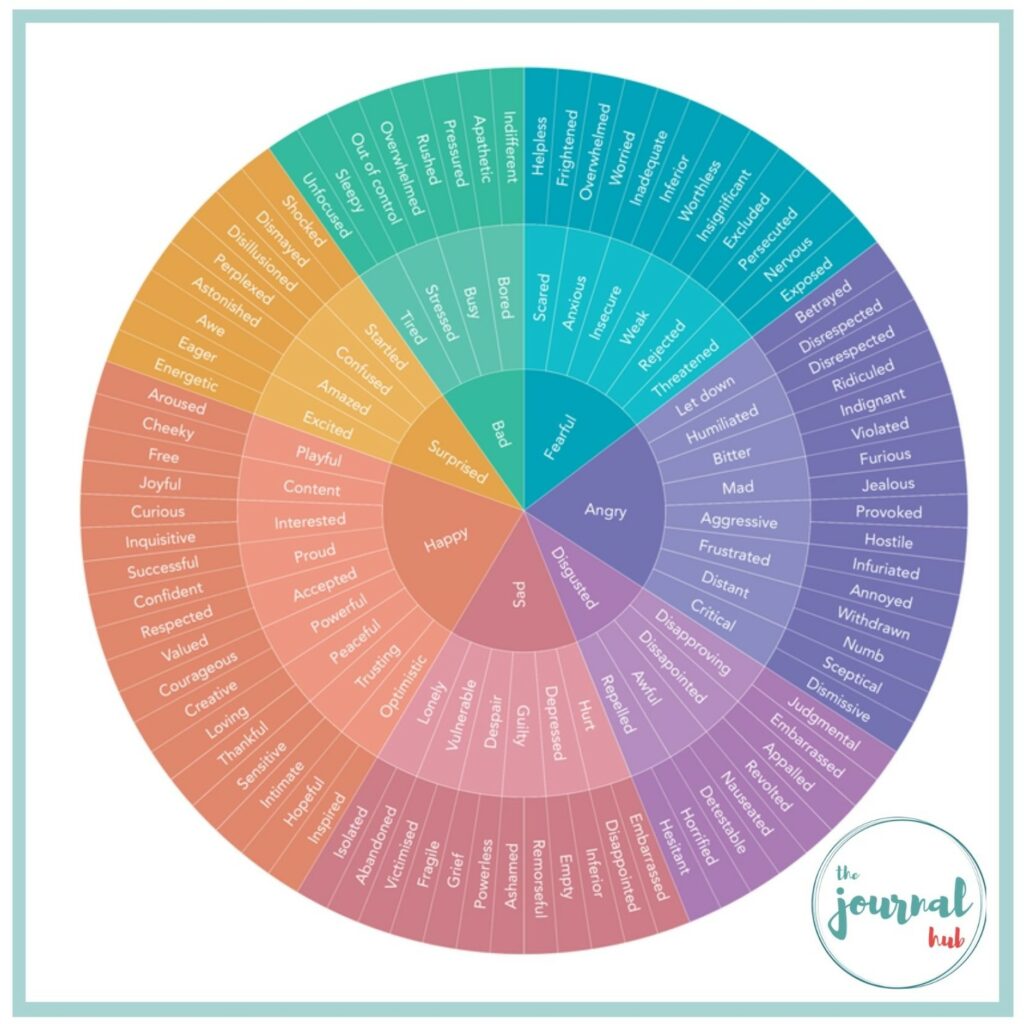
At no point, do you need to justify your emotion or judge it in anyway, simply name it and move onto the next stage.
Draw your emotion
This part is optional, although I do find it helps me to work through the emotion, it gives me time to reflect and experience the feeling. It’s a bit like the toddler tantrum. Children have an innate ability to work through emotions, if you let a toddler ride out a tantrum you will see it in action. They have the circumstance that upsets them (with a toddler that can be almost anything), they feel the emotion, usually with a big cry or throwing themselves on the floor doing some kicking and screaming, slowly they calm down and self sooth and then get up and get on with life.
The drawing part of this exercise is a bit like throwing myself on the ground kicking and screaming. In actual fact, it’s taking myself away, giving myself some space to feel the emotion while I draw, which can also encompass a big cry. Then incorporating the rest of the exercise to move into the self soothing part.
This process allows me to feel the feelings that I may not have had the opportunity to feel in the moment. It provides me with an internal sigh of relief and allows me to move onto the next part of the process. This is where my analytical brain steps in, my adult brain if you will, and I can start using that to change my thinking and my belief system.
Another reason I recommend creating an image or doing something creative, is because studies have shown that it takes 400 repetitions to create a new neural pathway in your brain. Unless you use creativity and play, in which case it takes just 10-20 repetitions. So if you want to speed up the process of learning to control your thoughts, get out your paints, coloured pencils and pens and draw something.
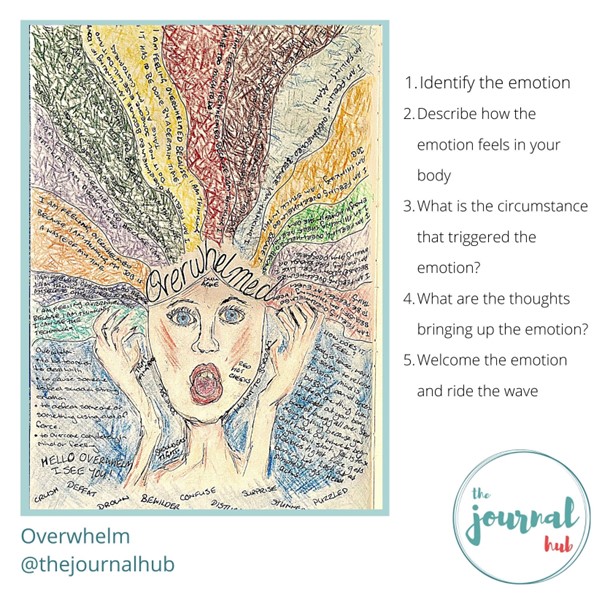
Describe the emotion
Now it’s time to describe the emotion. Emotions are simply energy in motion, this energy moves through the body creating a physical sensation. It’s important to be able to describe the emotion in detail. I did this on my overwhelm page, in words and also through my picture.
I get a dull ache in my head, my face gets red and hot, I clench my jaw and it starts to ache, the muscles in my shoulders get tight, if want to scream… you get the idea. Spend five to ten minutes describing how an emotion feels to you. If it helps pretend you are describing this emotion to someone who has never felt it before, you want to explain how it feels in your body.
Look at your body’s responses with compassion, do not judge the sensations you are noticing, but simply observe them and write it down.
What is the circumstance that triggered this emotion?
Can you determine the circumstance that triggered this emotion? Here it can get a bit a tricky because I only want you to write down the facts – the indisputable facts of the situation.
My feeling of overwhelm came when the real estate agent we rent our home through sent me email requesting to conduct an open home. On top of everything else that needed to be done I really didn’t need that. I immediately went into overwhelm. So what are the facts here.
I could say the facts are “I have a lot to do”, but actually that’s a thought. My “to-do” list might look like nothing compared to some people. The facts are “I have stuff to do” and maybe I can take it even further “I am choosing to do stuff”. Try to really drill down on the facts only.
Another example, maybe you have woken up, looked outside and it’s raining, cold and miserable. You are feeling disappointed because you planned a day out. You might say the facts are the weather is horrible, however that is not a factual description of the day, it is a thought. The facts are it’s raining, the temperature is 18 degrees. These are the indisputable facts that everyone would agree on.
You deciding it’s bad weather is on you. Someone who has lived in draught for years may be think it’s amazing weather. Even deciding 18 degrees is cold, is simply a thought. For those of us going through menopause 18 degrees can be a blessing!
Once you have determined what the facts are, you can journal the thoughts that are determining the emotion.
What are the thoughts bringing up this emotion?
Do a brain dump of all the thoughts you are having that are triggering this emotion – just write. (Side note: if you are adding these thoughts to your art work, you may want to do this brain dump on a separate piece of paper first).
“I have so much to do”
“I can’t possible fit something else in”
“I can’t do it all”
“It all has to be done by this date”
“I have to do it all myself”
“There are not enough hours in the day”
“I am not enough”
After you have jotted all those thoughts down on a piece of paper or in your journal, I want you to spend 10 minutes rewriting them using this sentence:
I am feeling (insert emotion) because I am thinking (insert thought).
For example: I am feeling overwhelm because I am thinking I have so much to do.
I am feeling overwhelm because I am thinking it all must be done by a certain date.
I am feeling disappointed because I am thinking it is horrible weather.
By changing the way you write your thoughts you are now putting yourself in charge of what you are thinking, you are examining your thoughts and letting your brain know you are in charge and therefore can control how you feel.
TIP: These are the sentences you want to put in your art work.
You will be surprised how effective this process is. It has helped me work through times where I feel overwhelm coming on. I can look at my artwork read my thoughts and know that it is simply those thoughts that are creating this feeling. If I don’t want to feel like this I can readjust my thoughts.
Welcome the emotion
The last thing I want you to do, is welcome the emotion into your life.
“Hello overwhelm, I see you. You’re welcome here, but don’t say too long”.
I know this may seem a little crazy, but we all need negative emotions. We cannot have perpetual happiness because then it simply becomes the norm. We need to experience negative emotions so we have contrast in our lives. This contrast is what makes the happy times happy.
Life is 34% happiness and joy, 33% ordinary and 33% crappy. Once we accept that and realise that there is nothing wrong with us if we are not feeling happy 100% of the time, the negative emotions lose some of their impact.
Anxiety is a big one. We all get told anxiety is bad, and we start feeling anxious and then we get anxious about being anxious. Feeling stressed is similar – we hear stress is bad for you, you feel stressed and so now you are stressed about being stressed.
Anxiety and stress are normal parts of life, and sometimes you just need to sit with them and work through it. The real issue occurs when you get stuck in these emotions. That’s why finding tools to help you work through them is important.
Don't just work on the "negative" emotions
I don’t like to label emotions as positive or negative – all emotions can serve a purpose, but more on that later.
You should also work on the feelings you want more of. Here I have done the exercise on feeling calm.
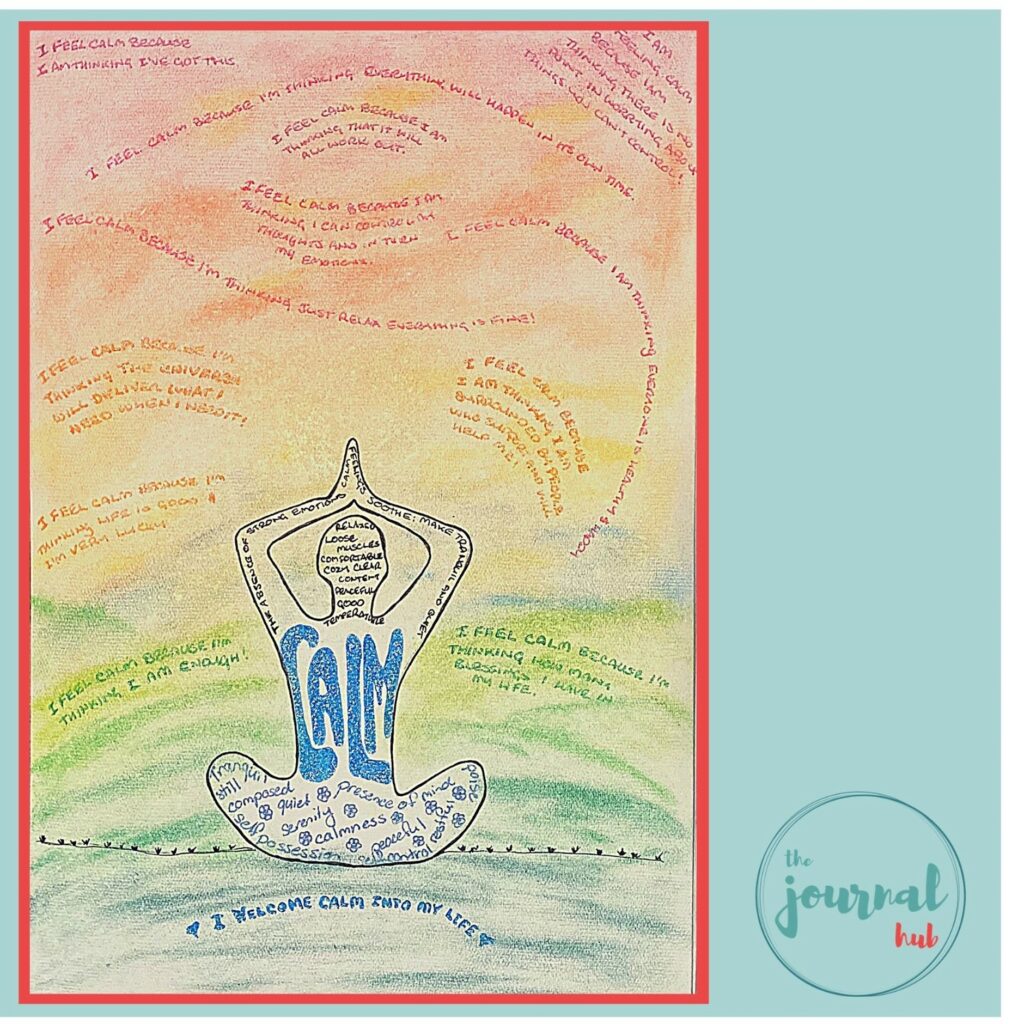
I have worked through the steps:
- Name the emotion
- Draw the emotion (as I said above this is optional, you may like to simply pick a colour that reflects this emotion for you)
- Describe the emotion
- Is there a circumstance that triggered this emotion?
- What are the thoughts that are causing this emotion? Remember to write them in the following format. I am feeling (insert emotion) because I am thinking (insert thought)
- Welcome the emotion.
Next time you are feeling a strong emotion or stuck in an emotion, try this technique. Pull out your journal and start working through the steps. If you don’t have time to draw, then simply write.
Let me know how you go with this exercise and if you are brave enough, send me through your pictures. I’d love to see them.


